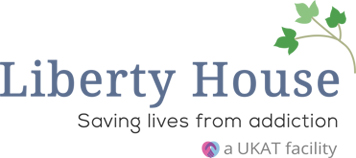“Date rape” drugs, which include substances like Rohypnol, Gamma Hydroxybutyrate (GHB), and Ketamine, can be colourless, odourless, and tasteless, making them nearly impossible to detect in beverages. Once ingested, they can incapacitate individuals, leaving them vulnerable to various forms of assault, particularly sexual assault.
What is drink spiking?
Drink spiking involves adding alcohol or drugs to someone’s drink without their knowledge or consent. This act is often done to incapacitate the victim for crimes such as theft or sexual assault, but it can also occur as a dangerous prank. Common substances used for spiking include:
- Alcohol
- Rohypnol (flunitrazepam)
- GHB (gamma-hydroxybutyrate)
- Ketamine
As mentioned, these are nearly always odourless, colourless, and tasteless, making them difficult to detect.
Rohypnol, GHB, and Ketamine are frequently referred to as “date rape drugs” due to their sedative effects that can incapacitate a person, making them more vulnerable to sexual assault.
While “date rape drugs” specifically refer to substances used to facilitate sexual assault, other intoxicating substances like ecstasy or LSD are sometimes used for spiking in social settings, leading to a range of unpredictable and dangerous effects. The key distinction is the intended purpose: date rape drugs are typically used to commit sexual crimes, whereas other substances might be used for their disorienting effects in various criminal activities.
Typical settings
Drink spiking is a serious issue that commonly occurs in social settings such as bars, clubs, parties, and festivals. These environments are particularly susceptible due to their busy and often chaotic nature, which allows perpetrators to tamper with drinks unnoticed. Bars and clubs are reported to account for nearly 50% of drink spiking incidents, followed by private homes (22%), pubs (14%), and festivals (3%).
Individuals are especially vulnerable to drink spiking in crowded places, during social gatherings, and when drinking alone. In such scenarios, the distractions and volume of people make it easier for someone to slip substances into drinks. Victims might not realise their drink has been tampered with until symptoms like the aforementioned dizziness, confusion, nausea, or unconsciousness appear.
If a drink tastes, smells or looks strange, it’s safer to discard it. Additionally, sticking with trusted friends and watching out for each other can help prevent such incidents.
Recognising signs and symptoms
Recognising the signs and symptoms of drink spiking is crucial for ensuring personal safety and timely intervention. Common symptoms include:
- Dizziness
- Confusion
- Nausea
- Memory loss
- Difficulty walking or talking
- Sudden drowsiness or unconsciousness
These symptoms can appear rapidly, often within 30 minutes, and can last for several hours, depending on the substance used and the amount consumed.
Impacts on victims
Psychologically, the effects can be profound and long-lasting. Victims often report feelings of embarrassment, shame, and guilt, which can exacerbate the trauma. Anxiety, depression, and post-traumatic stress disorder (PTSD) are common, with many victims experiencing ongoing fear and paranoia about being spiked again. Long-term effects include persistent trust issues and a heightened sense of vulnerability in social settings, which can significantly impact their social lives and relationships.
Practical tips to minimise risks
Minimising the risk of drink spiking is crucial to ensuring safety in social settings. Here are some practical tips to help protect yourself and your friends:
- Never leave drinks unattended: Always keep an eye on your drink. If you need to step away, take your drink with you or ask a trusted friend to watch it. Better yet, finish your drink before leaving it unattended.
- Accept drinks only from trusted sources: Avoid accepting drinks from strangers. Instead, buy your own drinks and watch the bartender prepare them. If someone offers to get you a drink, accompany them to the bar and watch it being poured.
- Stay together with friends: Socialise with trusted friends and look out for one another. If someone appears more intoxicated than expected for the amount they have consumed, get them to a safe place and seek medical attention if necessary.
- Be cautious about sharing drinks: Avoid sharing or exchanging drinks with others, as this can increase the risk of drink spiking. Similarly, be wary of communal punch bowls or open containers at parties.
- Use personal safety devices: Consider using drink covers or anti-spiking bottle stoppers. These tools can help protect your drink from being tampered with without compromising your style.
- Stay aware and informed: Educate yourself about the signs of drink spiking, such as a sudden bitter taste, excessive bubbles, or a cloudy appearance in your drink. Being aware of these signs can help you detect and avoid spiked drinks.
Encourage sharing this information widely to ensure individuals remain informed and vigilant.
(Click here to see works cited)
- Whickham Practice. (n.d.). *Drink Spiking*. [online] Available at: <https://whickhampractice.nhs.uk/drink-spiking#:~:text=Drink%20spiking%20is%20when%20someone,your%20drink%2C%20without%20you%20knowing> [Accessed 24 Jun. 2024].





